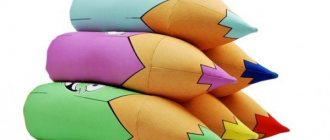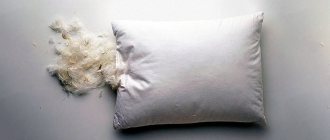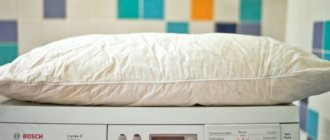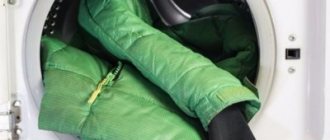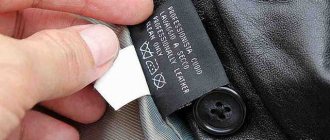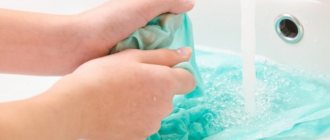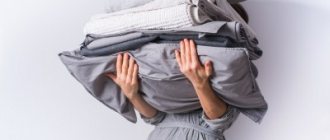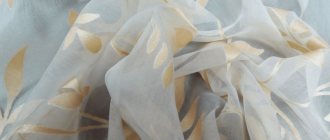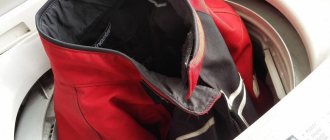In this article we will touch on the advantages of the material, as well as issues of washing and proper care.
- What is the material
- Advantages and disadvantages
- How to distinguish high-quality bamboo pillows from fakes
- Can bamboo pillows be washed?
- Differences between machine and hand washing
- How to wash bamboo pillows by hand
- Washing a bamboo pillow in a washing machine
- How to dry a pillow correctly
What is the material
Bamboo fibers for making fabrics and filling pillows are raw materials of plant origin. Bamboo grows in Asia, Africa, Australia and Oceania. This is an environmentally friendly, renewable raw material that people have learned to use in a variety of areas:
- Construction of houses, engineering and utility structures;
- Manufacturing of furniture and interior items (curtains, mats,);
- Making weapons;
- Tailoring;
- Cooking and gastronomy and much more.
How is this possible?
The fact is that bamboo has several stages of growth. Young shoots are used for food, and trunks that are at least six months old are used for construction. Yes, yes, you read that right. The plant grows very quickly and accordingly hardens just as quickly. To make fabric or bedding filling, mature plants are softened into fibers, a simple and healthy process.
Bamboo does not require stimulants to grow - just suitable soil and climate. It usually grows a lot; in the Middle Ages, entire groves were cut down for fields. In general, it is a cheap, environmentally friendly, renewable raw material, which also has undoubted health benefits.
How to wash a blanket
Washing a blanket in a machine with a small drum is not possible. The maximum load should be 7-10 kg or more. If you don’t have such a solid machine, the best solution would be a bathtub filled with water.
Instructions:
- The water temperature should not exceed 40 °C.
- Before the main wash, you need to soak so that the dirt has time to dissolve.
- There is no point in tossing or rubbing the garment. It is better to use volumetric basins and periodically press on the blanket. The total washing time is about 1 hour.
- After this, you need to rinse the product thoroughly. To get rid of powder residues faster and more completely, you need to allow the liquid to drain as completely as possible in each cycle. Then, closing the drain hole, fill the bathtub with a sufficient amount of clean, warm water over and over again. After the final cycle, it is advisable to allow excess liquid to drain, gradually pulling the blanket onto some support such as a basin or stool.
- At the last stage you will need to squeeze out the water from the lower parts. And then start spinning on dry towels. To do this, you can make something like a sandwich and stomp on the surface with your clean feet. Subsequently, air dry the blanket in warm weather.
Advantages and disadvantages
Why is bamboo so highly valued in home textiles? In short:
- Increased hygroscopicity;
- The ability to suppress the growth of pathogenic bacteria;
- Hypoallergenic;
- Softness;
- Does not accumulate dust and static electricity;
- Affordable price.
The antibacterial effect - the ability to suppress the growth of pathogenic bacteria - is the most valuable property of bamboo. The material is actively used in medicine and buyers are confident that towels, bed linen and clothing will only bring benefits! Bamboo filling is safe for allergy sufferers and asthmatics, which is important in our time when every tenth inhabitant of the planet suffers from allergies and respiratory diseases.
The fibers of the plant are more porous than cotton and absorb one and a half times more liquid. They are also softer than cotton, which is why bamboo terry towels have recently been in high demand.
However, shortcomings should also be mentioned here. The fact is that bamboo fibers are much smaller than cotton fibers and towels “clip” after washing. Therefore, many manufacturers make products from a mixture of cotton and bamboo, which, of course, affects the quality of the material. The towel becomes more voluminous and fits less, but, for example, we can no longer talk about suppressing pathogenic bacteria.
In addition, if you have back problems, it is better not to use a bamboo pillow, but to prefer an orthopedic product that will better support the neck muscles and better allow them to relax.
Benefits of bamboo fiber
Bamboo fiber has an impressive list of advantages, the main ones are:
- elasticity;
- environmental friendliness;
- security;
- hygroscopicity.
These pillows are hypoallergenic, they have a breathable porous structure and a pleasant smell. They are famous for their softness and elasticity, provide comfortable conditions for relaxation, and perfectly relieve fatigue.
Do you have bamboo pillows in your home?
Not really
Bamboo has unique properties, so bedbugs and other harmful insects do not grow in it. This is an environmentally friendly product, since bamboo plantations are located away from factories and other industries that pollute the environment. The fiber is obtained mechanically, there are no chemical additives.
Note! Bamboo pillows are suitable for everyone without exception, even people prone to allergic reactions. Substances present in the fiber slow down aging and reduce the likelihood of tumors.
Pillows with similar filling have deodorizing properties and are well ventilated due to their porous structure. People practically do not sweat on them while sleeping. If sweat is released, it is in small quantities and quickly evaporates, eliminating irritation of the skin.
Since bamboo is a natural antiseptic, it is assumed that all microorganisms found in the filler die within 24 hours. This material is not subject to rotting, so the pillow will last a long time, of course, if you properly care for it following the recommendations.
How to distinguish high-quality bamboo pillows from fakes
However, if you see a bamboo fiber pillow in the store, this does not mean that it is 100% made of natural raw materials. Of course, no one will let you open the case, but a self-respecting manufacturer does not hide information about what percentage of synthetics is contained in the filler.
But if there is no such information, two things should alert you:
- Price too low;
- The phrase bamboo filler is in any word form and in quotation marks, which means that inside, in addition to bamboo, there may also be synthetic material.
In fact, there is nothing wrong with synthetics, except that too much of it (more than 20%) directly affects the quality of the filler: the pillow does not absorb sweat and may begin to smell unpleasant over time. But synthetics make it easier to care for the item (the pillow dries much faster), gives the product additional elasticity and significantly reduces its cost. Typically, polyester or swan's down (highly siliconized fiber) are used as synthetic fillers.
Marking
To avoid mistakes in care, you need to know exactly what components are included in the filler. Typically, bamboo pillows are marked with one of the following marks:
- bamboo linen;
- bamboo viscose;
- bamboo rayon;
The first marking means that the product is made from natural raw materials, without any additives. The next two indicate that the filler has been treated with chemicals.
If there is synthetic padding in the composition, the pillow quickly loses its beautiful appearance. Products that contain holofiber, comforter or ecofiber are much more durable.
Can bamboo pillows be washed?
It is not only possible, but also necessary to wash bamboo pillows at home. Dry cleaning can damage the fiber, but home washing with mild detergents does not.
But keeping your bamboo bedding in tip-top condition isn't just about washing. They need to be dried periodically, because the ability of fibers to absorb and remove excess moisture is not endless.
Good housewives recommend the following annual care calendar:
- Winter: drying;
- Late spring: washing;
- Summer (peak): sun drying;
- Autumn: washing.
Along with it, if you feel that the pillow has begun to smell, it is better not to wait for what was planned, but to wash or dry the bedding well, because, as you know, an unpleasant odor can interfere with normal sleep.
Before you start washing, you need to remove stains from the cover (if any).
What detergent to use
Bamboo pillows should be washed in fairly cool water. Dry powder granules dissolve poorly at low temperatures, do not cope with dirt and are difficult to wash out. Therefore, it is worth choosing products in gel or liquid form.
Laundry soap shavings are also an excellent cleanser. Baby soap will dissolve well in cool water, but will not cope with severe stains.
Important! If you don’t have a suitable detergent at hand, use a gentle (for example, children’s) washing powder, pre-mixed in a small glass of warm water.
To maintain the softness of the filler, use special fabric softeners.
Differences between machine and hand washing
There are two ways to wash a bamboo pillow:
- In the washing machine;
- Manually.
Some people believe that machine washing is preferable because it saves time and effort. This is true, but we must not forget that bamboo fiber is capable of absorbing a large amount of moisture and, if the drum is filled with more than 2/3 of the dry product, there can be no talk of any high-quality washing; it is necessary to wash the pillow by hand.
For each washing method you need to use your own product. There are powders, gels, liquids, shampoos intended for hand and machine washing. Detergents for hand washing create more foam than those for automatic washing machines, so you should never mix them up.
It is known that foam and soap solution wash, so you need to prefer products that dissolve in water as much as possible, that is, gels or shampoos. And, of course, it is necessary to rinse the products thoroughly, because detergents contain parabens and other substances that can cause allergies.
Washing recommendations
First, carefully study the information on the product tag.
- A certain temperature regime is recommended for bamboo textiles. At high temperatures, the fiber begins to melt. Therefore, only warm or cool water is suitable. Important! Cleaning with hot steam is strictly prohibited.
- It is not recommended to use aggressive chemicals and products containing chlorine.
- You can wash a bamboo pillow only with liquid detergents. Otherwise, grains of washing powder may not be washed out and lead to compaction of the filler.
- Frequent washing is not recommended due to possible fiber clumping. When surface contamination occurs, bamboo textiles are cleaned dry. But if dirt gets inside, washing is required. Contaminant particles penetrate under the pillow cover with constant use. The pillow absorbs sweat that needs to be removed.
- To keep your bedding smelling fresh, vacuum and fluff it, saturating the porous bamboo with oxygen.
Attention! Dry cleaning of pillows is strictly prohibited!
How to wash bamboo pillows by hand
The algorithm is as follows:
- Remove stains from the cover, if any;
- Pour warm water into a bathtub or large basin, dissolve the laundry detergent in it and whisk into foam;
- Immerse the pillow in water and leave it for a while;
- Raise and lower the pillow, simultaneously squeezing the surface with gentle movements, repeat the procedure several times;
- Rinse the pillow thoroughly and then place it on a flat surface to allow the water to drain.
The product is ready to dry.
Hands
Hand washing, just like machine washing, begins with inspecting the cover. If there are holes, even the smallest ones, they need to be sewn up. After this, you should prepare a clean container of a suitable size.
Large pillows can be washed directly in the bathtub, but the bathtub must be washed thoroughly first.
Warm water (no more than 40 degrees) is filled into the container . After this, liquid detergent for delicate laundry (40-50 mg) is added.
You can use the product for children's clothing. The main thing is that it is hypoallergenic, since when washing by hand it is not always possible to completely rinse out the detergent.
The detergent needs to be mixed in water, but not whipped to a rich foam , because in this case it will be more difficult to rinse the pillow.
Next, the pillow is placed in soapy water. It must be completely wet, slightly wrinkled and left in water for 15 minutes.
After the allotted time has passed, the pillow should be turned over several times without removing it from the water. If it has not been washed for a long time, you can leave it for another 10 minutes. After this, you need to drain the water and begin the rinsing procedure.
Products with bamboo filling should not be rinsed under running water , as this may lead to the filling becoming churned. You need to pour clean water into the container and rinse the pillow until the water becomes soapy. After this, the water is drained again and the container is filled with clean water.
The procedure is repeated several times. The process ends when the water stops foaming.
The final stage is drying . But first, the pillow must be removed from the water and placed on a grate installed above the bathtub or washbasin to drain.
In 20-30 minutes the water will drain from it. The product cannot be left in this position for longer; it must be placed correctly to dry.
Wash by hand using mild, gentle detergents, without the use of bleaches. There is no need to separate the cover and the filler . But if separate cleaning of the cover and filling is required, then the filling is placed in a bag or pillowcase made of non-fading fabric.
Washing a bamboo pillow in a washing machine
Carefully inspect the product, if there are stains, remove them. If there are holes in the cover through which the filling could fly out, sew them up. Further:
- Set the washing machine to a delicate cycle;
- Turn off spin;
- Fill the compartments with detergent; it is not recommended to use rinse aid;
- Load things into the washing machine, activate it;
- At the end of the cycle, drain the water and let the pillow sit in the washing machine drum for a little longer to drain excess water.
The product is ready to dry.
How to dry a product with bamboo filling?
Bamboo bedding is dried in several stages. First let the water drain. To do this, place the product on the grate above the bathtub.
Pillows should not be squeezed or twisted. When washing in a machine, we skip this step, since after a light spin the water should not drain from the pillow.
The next stage is vertical drying. The product is placed on a terry towel or a cotton sheet folded several times. Every few hours you need to turn the pillow over and replace the wet fabric underneath with dry one.
The almost completely dried pillow is taken out into the open air - into the yard or loggia. At this stage it can already be hung vertically. You can simply place it on a clean surface.
Periodically, the product needs to be whipped and turned over . After the pillow has completely dried, it is advisable to leave it in the fresh air for a few more hours.
Using a hair dryer for drying is not recommended. Do not place it near a battery or in direct sunlight.
Ironing is strictly prohibited . All these options involve uneven heating of the filler, as a result of which it may become heterogeneous, which will negatively affect the properties of the pillow.
